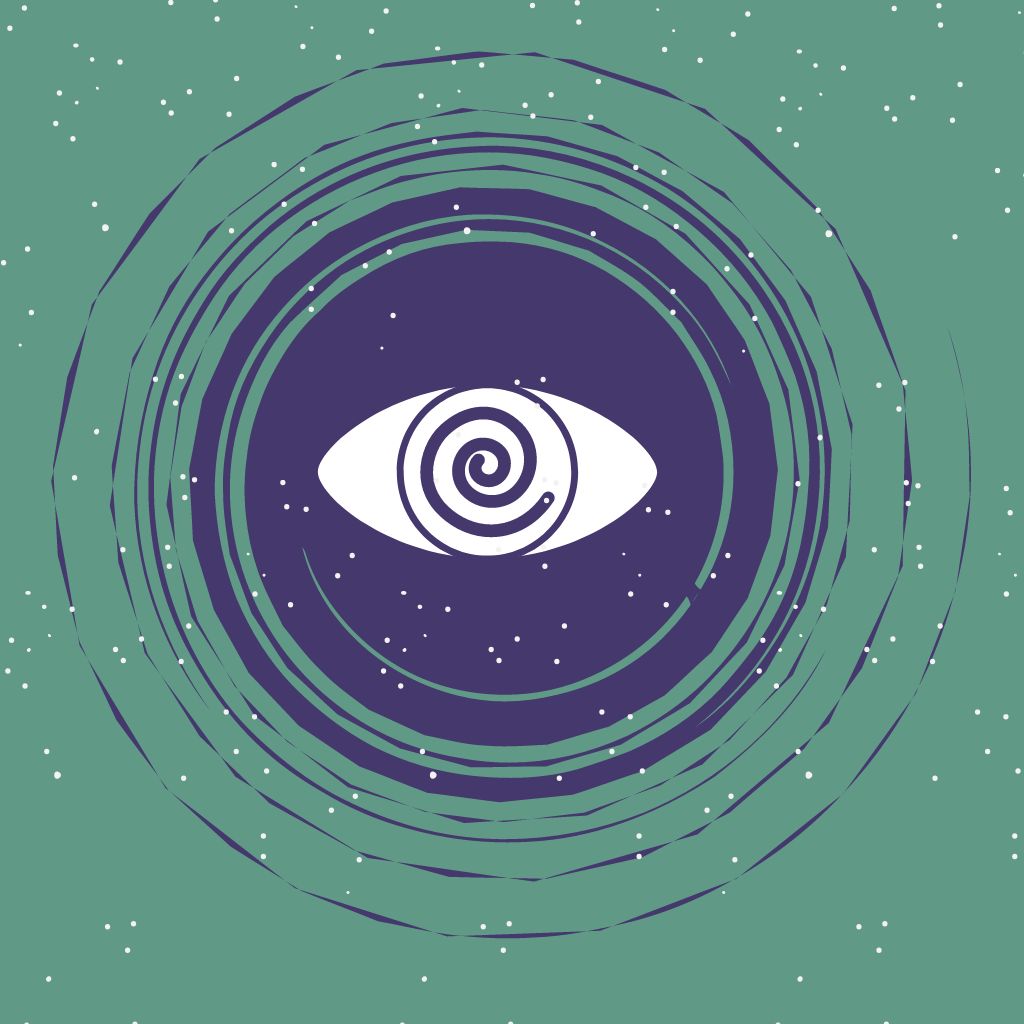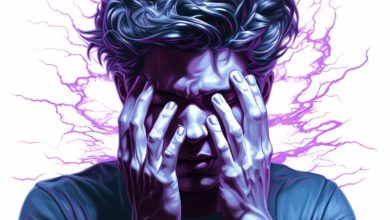Lucid Dreaming Guide: All Questions Answered

In the realm of slumber, where reality intertwines with the surreal, a phenomenon known as “lucid dreaming” has captured the imagination of countless dreamers, both novice and seasoned. Perhaps you’ve encountered whispers of its existence in conversations or stumbled upon its portrayal in movies and books. Yet, the true nature of lucid dreaming often remains obscured, shrouded in misconceptions and fleeting glimpses of understanding.
What is Lucid Dreaming?
Think of lucid dreaming as a special type of dream adventure where you become fully aware that you’re inside a dream. It’s like a secret doorway to a world where anything is possible. In regular dreams, things can be blurry and confusing, but in a lucid dream, everything feels super real – as if you’re wide awake in a different reality.
Imagine you’re the director of your dream movie. You can change the scenery, talk to anyone you want, and even fly through the sky like a superhero. It’s like having your own magic dream remote control.
But here’s the catch: lucid dreaming doesn’t happen to everyone all the time. It’s like finding a rare treasure in the world of sleep. Sometimes, you might have a lucid dream and not even realize it because it’s a bit tricky to tell if you’re dreaming or not.
When Do Lucid Dreams Happen?
To understand when lucid dreams unfold, let’s take a quick look at the stages of sleep and what happens in your brain.

REM Stage and Lucid Dreams
Sleep isn’t just one long nap; it’s made up of different stages. One of these stages is called REM (Rapid Eye Movement) sleep. It’s a bit like the star of the show when it comes to lucid dreaming. During REM sleep, your brain is super active, just like when you’re awake. This is the stage where most of your dreaming happens, including the possibility of lucid dreaming. It usually occurs about 90 minutes after you fall asleep. But as your night’s sleep goes on, the REM stage becomes longer and happens more often. So, the chances of having a lucid dream increase the later you sleep.
Brain on Lucid Mode
When you’re in a lucid dream, your brain is working in a unique way. The part of your brain responsible for decision-making and awareness – the prefrontal cortex – lights up, almost as if you’re awake. But the rest of your brain, the parts that control logical thinking, remain a bit sleepy. This mix of wakefulness and dreaminess is what makes lucid dreams so special.
Body in Dream Mode
Interestingly, your body reacts too! In real life, if you want to move your arms or legs, your brain sends signals to your muscles. In a lucid dream, those same signals happen, but your muscles stay mostly relaxed because your body knows you’re asleep and it is dangerous to walk and move with your eyes closed!
| Discover: Can Nightmares and Dreams Cause Trauma?
How Do You Know If You’re Lucid Dreaming or Not?
Distinguishing a lucid dream from an ordinary one involves honing your awareness within the dream world. Here are some signs that can help you identify when you’re experiencing a lucid dream:

Heightened Awareness
In a lucid dream, you might feel more “awake” than usual within the dream. This heightened awareness can prompt you to question your surroundings, thoughts, and actions. It’s as if a spotlight of consciousness is shining within the dream, allowing you to critically analyze the details around you.
Unusual Reality Checks
Performing reality checks is a common technique to confirm if you’re dreaming. These checks involve trying to do something that’s impossible in the real world, like pushing your finger through your palm. In a lucid dream, you might actually succeed at these checks, indicating that you’re in a dream state.
Mindful Intention
Lucid dreaming often involves the realization that you’re dreaming coupled with an intention to take control. If you find yourself making conscious choices in your dream – like deciding to explore a different path or engage with dream characters – it’s a strong indicator that you’re in a lucid dream.
Analyzing Details
Pay attention to the details of your surroundings. In dreams, things can be inconsistent or nonsensical. If you notice things that don’t quite add up or seem out of place, it could trigger your awareness that you’re in a dream.
Example Scenario of Lucid Dreaming
Imagine you’re walking through a bustling marketplace in your dream. As you observe the vibrant stalls and interact with the dream characters, a thought crosses your mind: “Is this real?” This seed of doubt prompts you to perform a reality check. You reach out to touch a nearby wall, half-expecting your hand to pass through it – and it does. A wave of realization washes over you, accompanied by a surge of clarity. You now understand that you’re within a dream world, an architect of your own mental creation.
Lucid Dreaming: Conscious or Unconscious?
Lucid dreaming is a bridge between two worlds – the conscious and the unconscious – where the boundaries between the two often blur, creating a fascinating tapestry of experiences.

Conscious Awareness in Dreams
In the realm of lucid dreaming, you’re not just a passive observer; you’re an active participant who’s fully aware of the dream state. Imagine walking through the vivid landscapes of your dream with a sense of complete consciousness. You’re not just reacting to the dream; you’re engaging with it, questioning its reality, and even altering its course. This conscious awareness is a unique facet of lucid dreaming, allowing you to explore your dream world with a level of clarity that transcends the typical dream experience.
Unconscious Processing and Dream Symbolism
However, even within the lucid dream, there’s an interplay between conscious intention and the unconscious mind. Dreams often draw upon the wellspring of your subconscious thoughts, memories, and emotions. Elements of your unconscious mind can weave themselves into the fabric of the dream – symbolisms, emotions, and hidden desires that might not be immediately apparent. This intriguing blend of conscious awareness and unconscious processing adds depth and complexity to the experience, inviting you to explore the layers of your psyche.
History and Research
Throughout history, the exploration of lucid dreaming has captured the imaginations of philosophers, psychologists, and researchers alike, creating a rich tapestry of insights into the enigmatic realm of the dream world.

Early Philosophical Explorations
Lucid dreaming finds its roots in ancient texts, where cultures such as the Tibetan Buddhists and the ancient Greeks recognized the potential for self-awareness within dreams. Aristotle, in his work “On Dreams and Divination,” pondered the nature of dreams and the awareness that occasionally arises within them, laying the foundation for future investigations.
20th-Century Psychological Inquiries
In the 20th century, renowned psychologist and dream researcher Frederik van Eeden coined the term “lucid dream” in 1913 to describe dreams in which the dreamer is conscious of the dream state. His pioneering work catalyzed further exploration into this phenomenon. Subsequently, the influential psychologist Celia Green’s work in the 1960s highlighted the transformative potential of lucid dreaming for self-discovery and personal growth.
Modern Scientific Advancements
Moving into more recent times, scientific research has delved into the neural mechanisms underlying lucid dreaming. Dr. Stephen LaBerge, founder of the Lucidity Institute, utilized the technique of eye movement signals during dreams to provide a method for dreamers to signal their conscious awareness from within the dream state. This groundbreaking approach revolutionized our understanding of the phenomenon by allowing for real-time communication between dreamers and researchers.
Notable Studies and Contributions
One of the landmark studies in the field is the research conducted by Ursula Voss and her colleagues, who employed neuroimaging techniques to identify specific patterns of brain activity during lucid dreaming. This study shed light on the interplay between brain regions associated with self-awareness and cognitive control, offering crucial insights into the neural basis of conscious awareness within dreams.
| Also might be interesting: Complex PTSD and Sleep Disturbance
Myths about Lucid Dreaming
Lucid dreaming, shrouded in mystery and fascination, has also given rise to its fair share of myths and misconceptions. Let’s unravel some of these misconceptions and shed light on the truth behind them.

Myth 1: You Can Get Stuck in a Lucid Dream
A common fear is that if you become too engrossed in a lucid dream, you might become trapped within it, unable to wake up and return to reality.
The notion of getting stuck in a lucid dream contradicts our understanding of sleep cycles. Dreams, including lucid ones, occur during REM sleep, which is a temporary stage in your sleep cycle. Your body naturally cycles through different sleep stages, and you will eventually transition to a different stage and awaken. Getting “stuck” in a lucid dream is not a genuine concern.
Myth 2: Lucid Dreaming is Just a Fantasy, Not a Real Experience
Critics argue that lucid dreaming is merely a form of daydreaming and lacks any substantial significance.
Scientific research has confirmed the realness of lucid dreaming as a distinct state of consciousness (LaBerge, S., & DeGracia, D. 2000). Brain scans and physiological measurements demonstrate that lucid dreamers experience a heightened level of awareness within their dreams, distinguishable from regular dreams. The potential for self-awareness and directed action within dreams adds depth to the experience.
Myth 3: Lucid Dreaming is a Form of Escapism
Critics claim that engaging in lucid dreaming is an avoidance tactic from facing real-world challenges and responsibilities.
Lucid dreaming, when approached with a balanced perspective, is not an escape from reality but rather a creative tool for personal growth and self-discovery. It can be a means of confronting fears, improving problem-solving skills, and exploring one’s subconscious mind.
Myth 4: Lucid Dreaming is Just Like It’s Shown in Movies
Media often portrays lucid dreaming as an instant gateway to ultimate control, where dreamers can conjure anything they desire effortlessly.
While movies may dramatize the experience for entertainment purposes, the reality of lucid dreaming is a bit more nuanced. Achieving complete control over every aspect of a dream can take practice and skill development. While lucid dreamers can influence their dreams, it’s not always a seamless process, and the level of control can vary from dream to dream.
Your mornings deserve a positive beginning…
Shake Off Morning Anxiety and Start Your Day Strong!
Discover our expert tips to wake up feeling refreshed and anxiety-free.
What Causes Anxiety Upon Waking Up?
The Benefits of Lucid Dreaming: Is It Good?

Lucid dreaming isn’t just a captivating phenomenon; it also holds the potential to reshape our minds and enhance various aspects of our waking lives. While some benefits are still being explored, others have been substantiated by scientific research. Here are some ways lucid dreaming can shape the mind:
- Enhanced Creativity: Lucid dreaming provides a platform for exploring creative ideas and scenarios, allowing the mind to experiment with new concepts without the constraints of the waking world. Studies have shown that lucid dreamers can engage in imaginative problem-solving and generate novel solutions during dreams (Schredl & Erlacher, 2011).
- Overcoming Fears and Nightmares: Lucid dreaming offers an opportunity to confront fears and nightmares in a safe environment. By realizing you’re in a dream, you can actively challenge frightening situations, ultimately reducing the emotional impact of these experiences (Spoormaker & van den Bout, 2006).
- Improved Problem-Solving Skills: Engaging with challenges within lucid dreams can improve your problem-solving skills (Stumbrys et al., 2015). Dream scenarios can be manipulated to explore different approaches and outcomes, fostering cognitive flexibility that may transfer to your waking life.
- Exploration of Altered States of Consciousness: Some proponents suggest that lucid dreaming offers a unique portal to explore altered states of consciousness, potentially leading to insights into the nature of perception and reality. However, more research is required to substantiate this claim.
Potential Dangers of Lucid Dreaming
While the realm of lucid dreaming holds intrigue and promise, it’s crucial to acknowledge that delving into this practice without proper guidance can potentially lead to risks for both your mind and body. It’s important to exercise caution and approach lucid dreaming responsibly.

- Sleep Disruption and Quality: Engaging in intensive lucid dreaming practices or attempting to induce lucid dreams too frequently can disrupt your sleep patterns. This might result in inadequate rest, leading to daytime fatigue, reduced cognitive function, and even potential mental health issues over time.
- Dissociation and Reality Confusion: Intense focus on lucid dreaming can blur the lines between your waking life and dream world. Over time, this can lead to difficulties distinguishing between reality and dreams, causing a condition known as “reality confusion” or dissociation. This state can negatively impact your day-to-day functioning and emotional stability.
- Sleep Paralysis and Hallucinations: Some individuals experience sleep paralysis during the transition between wakefulness and sleep, which can be accompanied by hallucinations and a feeling of being unable to move. While sleep paralysis is a normal phenomenon, heightened anxiety stemming from lucid dreaming attempts might amplify these experiences, causing distress.
- Emotional and Psychological Impact: For those with pre-existing psychological conditions, lucid dreaming practices can potentially exacerbate anxiety, depression, or other mental health issues. Intense emotions experienced within dreams might influence your waking emotional state, especially if you’re not prepared to manage them.
- Interference with Restorative Sleep: Spending an excessive amount of time engaged in lucid dreaming may take away from the restorative functions of sleep. Sleep serves critical physiological purposes, such as memory consolidation and physical recovery. Overemphasis on lucid dreaming at the expense of regular sleep can negatively impact your overall well-being.
| Read more: What is Sleep Anxiety?
Who Can Become a Lucid Dreamer?
Becoming a lucid dreamer involves a combination of individual factors, practice, and a deep understanding of the dream world. While lucid dreaming is an intriguing phenomenon, it’s important to recognize that the experience can vary widely among individuals.

Certain personality traits might make someone more prone to experiencing lucid dreams. Those who are naturally curious, open-minded, and attentive to their inner experiences tend to have a higher likelihood of becoming lucid dreamers. Individuals who frequently remember their dreams and engage in self-reflection are also more inclined to recognize the dream state.
Lucid dreaming is generally considered a rare occurrence. Studies suggest that while some people have occasional lucid dreams, experiencing them frequently is less common. The ability to consistently recognize and control dreams often requires dedicated practice and a deep connection with one’s subconscious mind.
Medications and Devices for Lucid Dreaming
In the quest to explore the fascinating world of lucid dreaming, it’s crucial to approach the use of medications and devices with a discerning eye. While the allure of shortcuts and aids is understandable, it’s important to prioritize your safety and well-being.
Unregulated Lucid Dreaming Pills
The concept of “lucid dreaming pills” might sound enticing, promising to expedite the process of entering a lucid dream state. However, these pills often lack scientific validation and regulation. Consuming unregulated substances, especially those marketed for dream enhancement, can pose serious health risks and potential side effects. It’s essential to avoid relying on such pills without consulting medical professionals.
Lucid Dreaming Masks and Devices
Lucid dreaming masks and devices are designed to enhance the likelihood of lucid dreaming by providing stimuli during REM sleep. These stimuli, often visual or auditory cues, aim to trigger awareness within the dream. While some users report success with these tools, their effectiveness can vary widely. Research into their reliability and safety is ongoing, and their use should be approached with caution.
Prioritizing Safety and Well-Being
If you’re interested in becoming a lucid dreamer or want to explore lucid dreaming for therapeutic purposes, consulting sleep professionals or therapists with expertise in dream work can provide valuable guidance. They can help you navigate the process safely and effectively.
The allure of achieving lucid dreams more easily or frequently can sometimes lead to hasty decisions. However, your safety and overall health should always be the primary concern. Relying on unregulated substances or devices without proper guidance can lead to unintended consequences that may affect your sleep quality, mental well-being, and overall life.
Learn more…
How to Lucid Dream
Exploring the world of lucid dreaming is a multifaceted endeavor that requires patience and dedication. Techniques can vary in effectiveness for different people, and a guided approach ensures that you’re pursuing lucid dreaming in a manner that enhances your overall well-being and mental health. Here are some common lucid dreaming methods:
Reality Checks
Throughout your waking hours, periodically ask yourself whether you’re dreaming. Perform simple reality checks, such as trying to push your finger through your palm or looking at text or a digital clock. If the result defies reality (your finger passes through or the text changes), you might be in a dream. Consistent practice of reality checks can help carry this awareness into your dream world.
Mnemonic Induction of Lucid Dreams (MILD)
This technique involves setting a strong intention to become lucid before sleep. As you drift off, repeat a mantra like “I will have a lucid dream tonight” in your mind. Visualize yourself recognizing you’re dreaming and engaging in a lucid dream scenario. The act of focusing your intention increases the likelihood of achieving lucidity.
Wake-Back-to-Bed (WBTB)
Combine the WBTB technique with other methods for a heightened chance of success. Set an alarm to wake you after a few hours of sleep, then stay awake for a short period (around 20-30 minutes). During this time, engage in activities that encourage your mind to be alert, such as reading about lucid dreaming. Return to bed with the intention of entering a lucid dream.
Dream Journaling
Keep a dream journal by your bedside. Upon waking, jot down as much detail about your dreams as possible. This practice enhances your dream recall and helps you identify recurring themes or scenarios that might trigger lucidity in future dreams.
| Suggestion: Depression and Sleep Disorders
Lucid Dreaming and Hypnosis

Lucid dreaming and hypnosis are both intriguing states of altered consciousness, often associated with exploration of the mind’s potential. While they share similarities, they also have distinct characteristics.
Both lucid dreaming and hypnosis involve a heightened level of awareness and suggestibility. In both states, individuals can experience vivid imagery, altered perceptions, and a sense of detachment from reality. However, lucid dreaming primarily occurs during sleep, while hypnosis is typically induced in a wakeful state.
Therapeutic Applications of Lucid Dreaming
While lucid dreaming itself isn’t a therapeutic technique like hypnosis, some therapists incorporate lucid dreaming into their practices. Lucid dreaming can offer a unique platform for exploring and addressing psychological issues. Therapists may guide clients to confront fears or work through emotional challenges within the dream state, leveraging the dream world as a safe space for self-discovery.
| Discover: PTSD Nightmares
HealWiser’s Last Piece of Advice
We’ve demystified lucid dreaming’s nature, benefits, and potential risks, addressing common myths while underlining its unique potential for personal growth. While techniques given offer paths to lucid dreams, we stress the necessity of professional guidance due to potential risks. The journey into lucid dreaming is an ongoing voyage, urging further research to fully grasp its potential.
Share your experience with HealWiser and others in the comments section below this post.
Sources:
American Psychological Association (APA)






